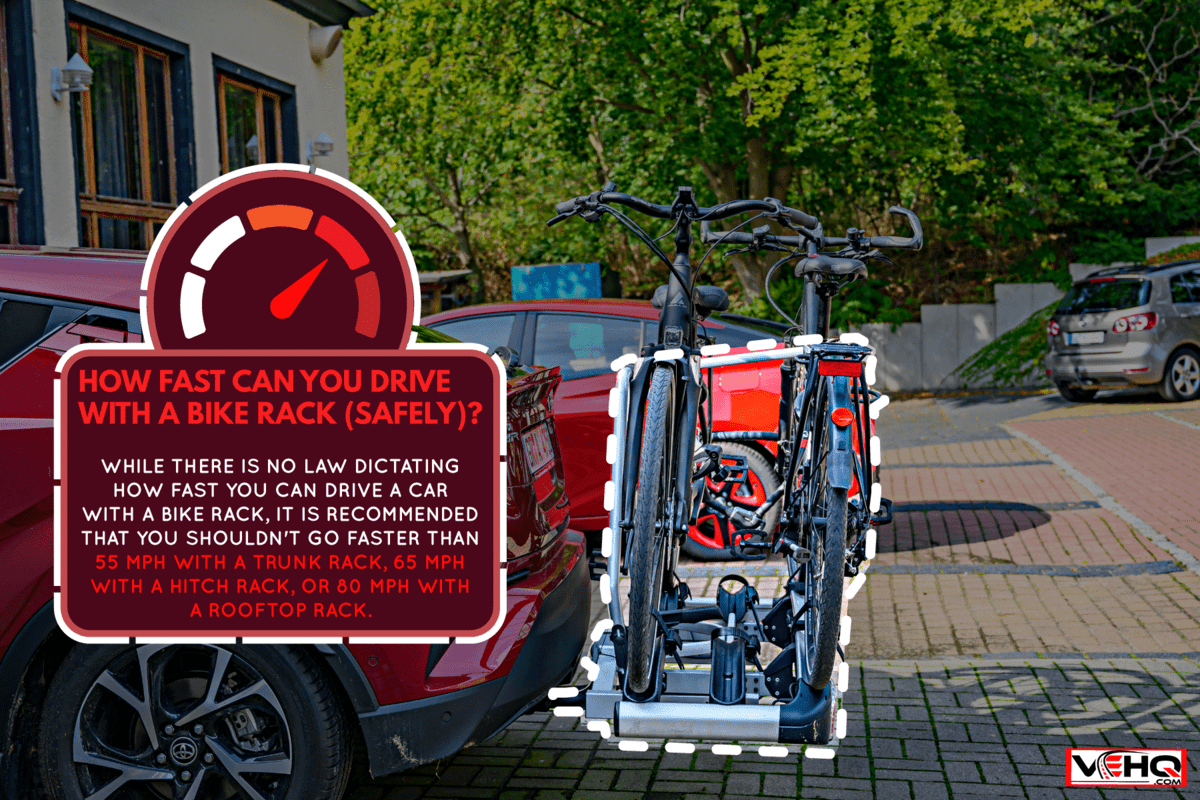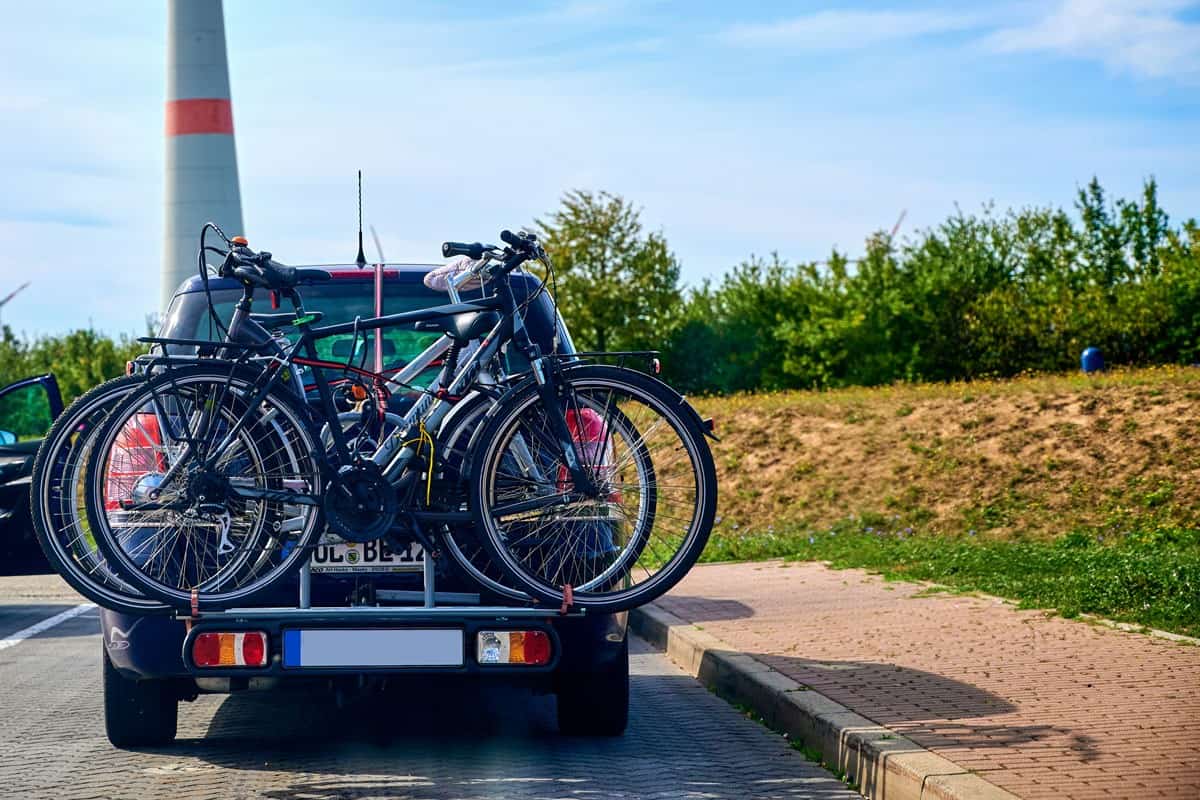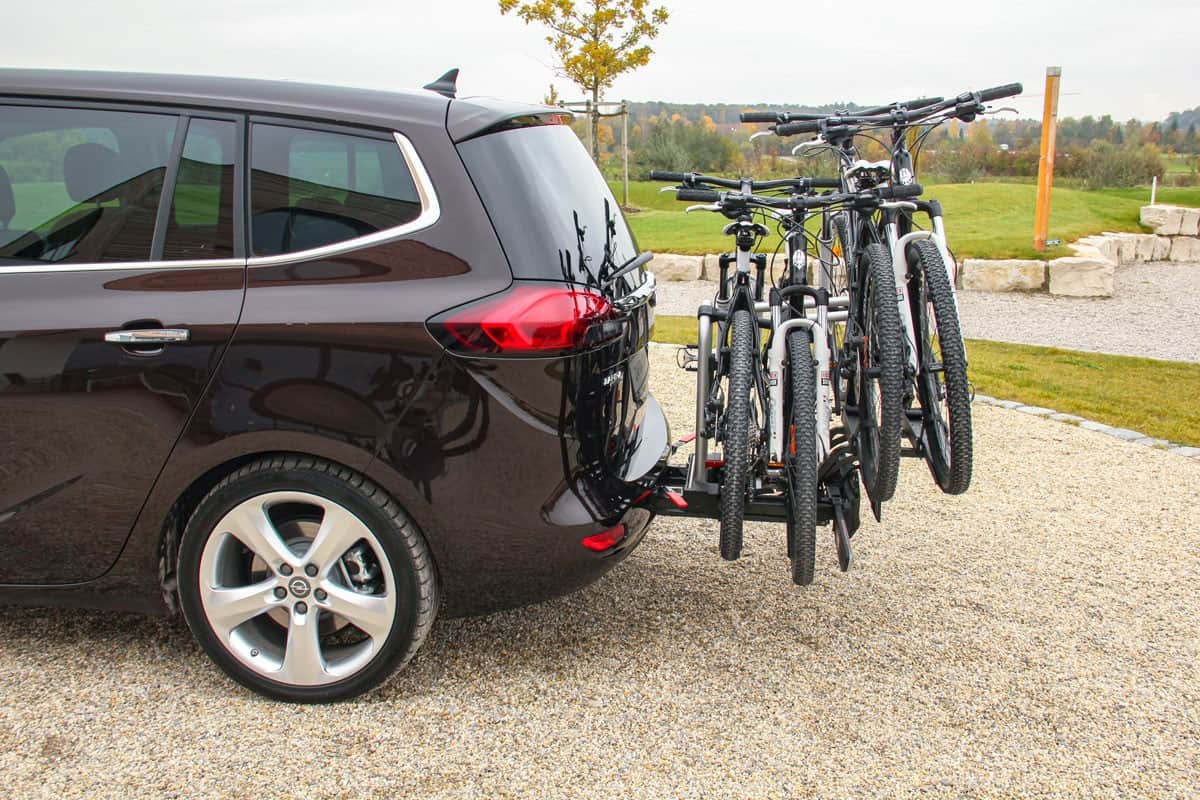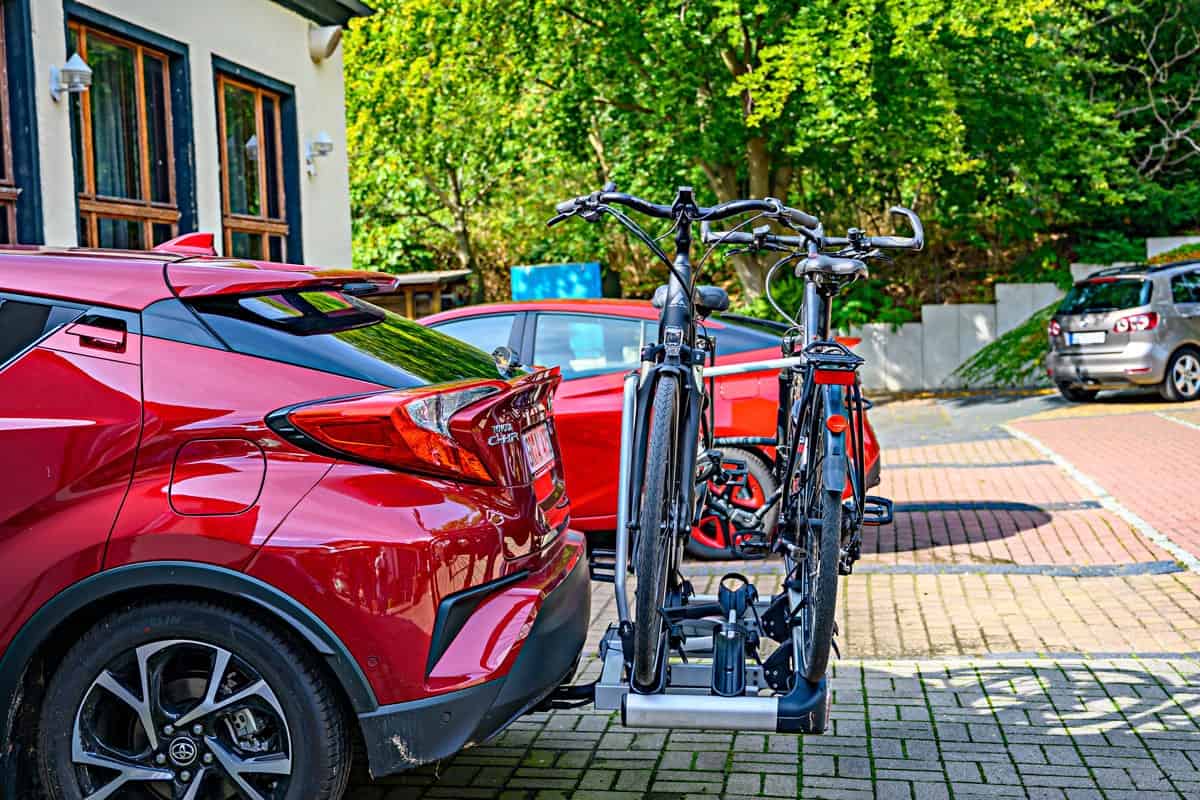While riding your bike is a great way to get around, it is sometimes necessary to transport it on a car bike rack in order to get to your riding destination faster. And so, you may be wondering how fast you can drive safely with a bike rack. Well, we’ve extensively researched this topic and have helpful information to share with you.
While there is no law dictating how fast you can drive a car with a bike rack, it is recommended that you shouldn't go faster than 55 mph with a trunk rack, 65 mph with a hitch rack, or 80 mph with a rooftop rack.
In this article, we will thoroughly discuss bike racks. We will elaborate on each recommended speed for each type of rack and the factors that affect your car’s speed while having this mounting rack. More information is ahead, so keep on reading.

What Are The Different Types Of Bike Rack?
The following are the various types and styles of bike rack mounting systems:
1. Trunk Mount Racks
Trunk-mounted racks are made to sit on the back of a car trunk and are fastened in place with straps. The bike is supported and held in place by cradles and arms.
These racks are ideal for recreational cyclists, and because the fit is adjustable, they can be used on a variety of vehicles. When not in use, trunk-mounted racks are lightweight, portable, and simple to store. They are simple to mount and dismount with some practice.
Click here to see this trunk mount rack on Amazon.
However, this type is frequently limited in load capacity, typically two to three bikes, and once mounted, they obstruct trunk access. Furthermore, the rack's effectiveness depends on the straps being tightly secured. When done incorrectly, the bikes could sway while driving.
2. Hitch Mount Racks
Regular users should consider hitch racks, especially if they need to transport more than three bikes. Two to five bicycles can often be transported on hitch racks. These racks often come with the following styles:
Platform Styles
As implied by its name, platform styles are supported by platforms. This design has the advantage of being the simplest and safest way to load your bikes and maintain them in position, preventing scratches or other damage to the bikes.
Click here to see this platform hitch rack on Amazon.
The drawbacks of these racks include the fact that they are usually more expensive and that they can be difficult to transport and store when not in use since they are so heavy.
Hanging Cradle Style
The advantage of this style is that it is normally less expensive than the platform style, lighter in weight, and will typically offer better ground clearance.
Click here to see this hanging cradle hitch rack on Amazon.
The downside is that the bikes aren't held in position as firmly and frequently swing and collide with one another as they move through the air. There may be slight paint abrasions on the bike.
3. Roof Mount Racks
If it's okay with you to put bikes on top of your car, then this type is for you. Especially, it suits you if you are a cycling or outdoor enthusiast due to its versatility. Its price may skyrocket if you need to add multiple cradles or build an entire rack system from scratch.
Click here to see this roof mount rack on Amazon.
If your vehicle lacks preinstalled mounting points, you can build your own using rack manufacturer specifications. Roof racks are also useful for transporting anything from small boats to skis to cargo boxes.
4. Spare Tire Mount Racks
This is similar to a trunk mount and an excellent choice for any off-road or sport-utility vehicle with a spare tire mounted on the rear of the vehicle. These racks typically rest on the tire or are securely screwed into the tire mount.
Click here to see this spare tire mount rack on Amazon.
These racks can only hold two bikes at a time, and tire covers need to be removed, which is inconvenient. A loaded spare tire rack also adds a few feet to your vehicle's overall length, so extra caution is necessary when backing up or maneuvering in tight spaces.
How Fast Can You Safely Drive With A Bike Rack?

The average rack weighs between 10 and 30 pounds (lb), with some weighing up to 40 lbs or more. When you add that to the bike's weight, which is about 20-40 lbs per bike, you'll be carrying an additional 30-70 lbs at the very least.
And if you load more bikes, you'll be transporting more weight. As a result, you cannot expect to travel as far as you normally do. Following is the breakdown of the average speed limits of various bike rack types.
1. Trunk Mount Rack’s Speed Limit
They are generally lighter and weaker than other types of bike racks. So don't expect to load many bikes or ride fast on them. If you do this, the rack will most likely sway and rub against the bicycle rack. Worse, it may become loose and detach, causing your bike to fall. When driving with a trunk rack, it's best to keep your speed under 55 mph. That way, you'll be much safer.
2. Hitch Mount Rack’s Speed Limit
They are more stable than trunk racks. As a result, a hitch rack is much faster than a trunk rack. You can reach a top speed of 65mph depending on the hitch rack style (platform or hanging).
However, keep in mind that when you accelerate, hanging hitch racks will sway. So, you must limit your top speed to less than 55 mph. Also, driving at the same speed as a trunk rack will be safer (55mph). But if it's a platform hitch rack, you can easily hit 65 mph in ideal road conditions.
3. Roof Mount Rack’s Speed Limit
They make your car move more aerodynamically, allowing you to travel much faster despite wind drag. The only disadvantage is that you will use more gas due to the increased mileage. With a rooftop bike rack, you can travel at speeds of up to 80 mph.
The top speed, however, is determined by the vehicle's horsepower, road conditions, and weather. With most roads having an 80mph speed limit, you can get up to top speed with a sturdy rooftop bike rack.
What Are The Factors That Influence Driving Speed With A Bike Rack?

Following are some of the factors that affect the speed of your car when driving with a bike rack:
- Rack Load Capacity: The combined weight of the bike(s) you load and the bike rack determine how fast you can go. Slow down if you put too much weight on the bike rack.
- Road/Traffic Conditions: On paved roads, you can expect to drive much faster than off-road. Contrary to the off-road bumps and rough patches that slow you down. But when many cars and people cross the street, it's more difficult to go fast.
- Weather Conditions: Strong winds and rain reduce your speed as they resist and drag you. Also, rain makes the surface slippery, requiring you to slow down. Plus, heavy rain reduces road visibility, requiring you to drive more cautiously.
- Road’s Speed Limit: You should not exceed the speed limit on the road, regardless of the type of bike rack you have. If you do, you will violate traffic laws, which are punishable. The speed limit on most streets is 35-65 mph.
- Vehicle’s Horsepower: In general, the size of the vehicle, particularly its horsepower, determines how fast you can travel with a bike rack. Expect the car to travel much slower with a bike rack if it has less horsepower.
What Are The Considerations Of Choosing A Bike Rack?

Now that you've learned about the various types of bike racks available on the market, it's time to look at other considerations when looking for a rack to transport your bike to your outdoor adventure destination.
- Bike Type: Some racks are made specifically for mountain bikes. You should definitely consider whether the rack you purchase will accommodate the types of bikes you intend to transport.
- Bike Quantity: The rack should be capable of carrying the bikes you wanted it to hold. If you like a particular two-bike capacity rack, some offer add-ons that allow it to carry four bikes. There are racks that can accommodate up to six racks.
- Weight Capacity: There are two aspects of weight capacity to consider. The first is the maximum weight capacity of each individual bike. The second factor is the total weight capacity of all bikes. You need a rack that can hold the weight of your bike(s).
- Hitch Size: You're set if you have a 2" hitch. If you have a 1.25" hitch, make sure your rack fits.
- Bike Loading Feature: The higher the bike to lift, the more difficult it is to load onto the rack. This is another advantage of platform racks overhanging racks.
- Damage Potential: Bikes at the hanging racks may move, potentially damaging the bike or the vehicle. So, it is advisable to use bungee cords to avoid this.
- Tilting: This is a must-have feature, especially if you're going on a longer trip.
- Combo Features: If you have to transport other equipment besides your bike such as skis, you should consider purchasing a bike rack that can accommodate a ski add-on.
- Locking Option: To prevent theft, you should definitely consider getting a rack that can lock the bikes.
Final Thoughts

Depending on the type of rack, you can drive at speeds ranging from 55 to 80 mph. However, the speed limit is also affected by the rack load capacity, road condition, weather, road speed limit, and the vehicle's horsepower.
If you are planning to purchase a bike rack, then check out the posts below for the options.





